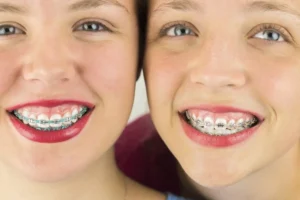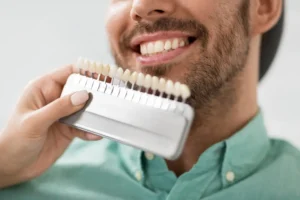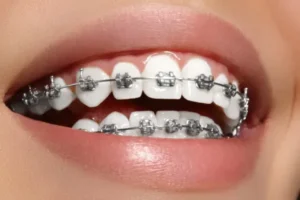¿Necesita espaciadores?
Los espaciadores se utilizan generalmente durante una o dos semanas antes del tratamiento de ortodoncia, para crear pequeños espacios entre determinados dientes. Los espaciadores suelen utilizarse en los molares posteriores, donde se fijarán las bandas metálicas. Los espaciadores son de goma o metal.
Si el ortodoncista los utiliza en tu caso, sólo los llevarás durante 1-2 semanas. Los espaciadores pueden resultar incómodos, como un trozo de comida atrapado entre los dientes con ortodoncia.

¿De qué están hechos los aparatos metálicos?
Los aparatos ortopédicos metálicos pueden estar hechos de muchos tipos diferentes de metal, combinados en una mezcla conocida como aleación.
Los aparatos ortopédicos metálicos más eficaces están hechos de aleaciones de titanio, combinadas con una pequeña cantidad de níquel y/o cromo. Las aleaciones de cromo-níquel-cobalto también son populares y eficaces. Los aparatos linguales Incognito® utilizan una aleación de oro para sus brackets, que se fijan a la cara interna de los dientes.
Todas las aleaciones metálicas de los brackets deben ser resistentes a la corrosión y biocompatibles, para garantizar que no causan inflamación o irritación de la boca, las encías y los labios cuando se colocan para el tratamiento. (Es normal que se produzca cierta irritación o molestia al principio del tratamiento, mientras la boca se adapta al nuevo aparato). Pregunta a tu ortodoncista qué tipo de metales utiliza para sus aparatos.
Los brackets metálicos deben estar fabricados con materiales resistentes a la corrosión porque la saliva trabaja duro para descomponer todo lo que hay en la boca; así es como el cuerpo digiere los alimentos.
Ningún metal es totalmente resistente a la corrosión, pero las aleaciones metálicas utilizadas en los aparatos metálicos se corroen muy lentamente y se mantendrán en excelentes condiciones durante todo el tratamiento. Por esta razón, los metales corrosivos como el hierro rara vez se utilizan en los aparatos de ortodoncia, o se utilizan en cantidades muy pequeñas.
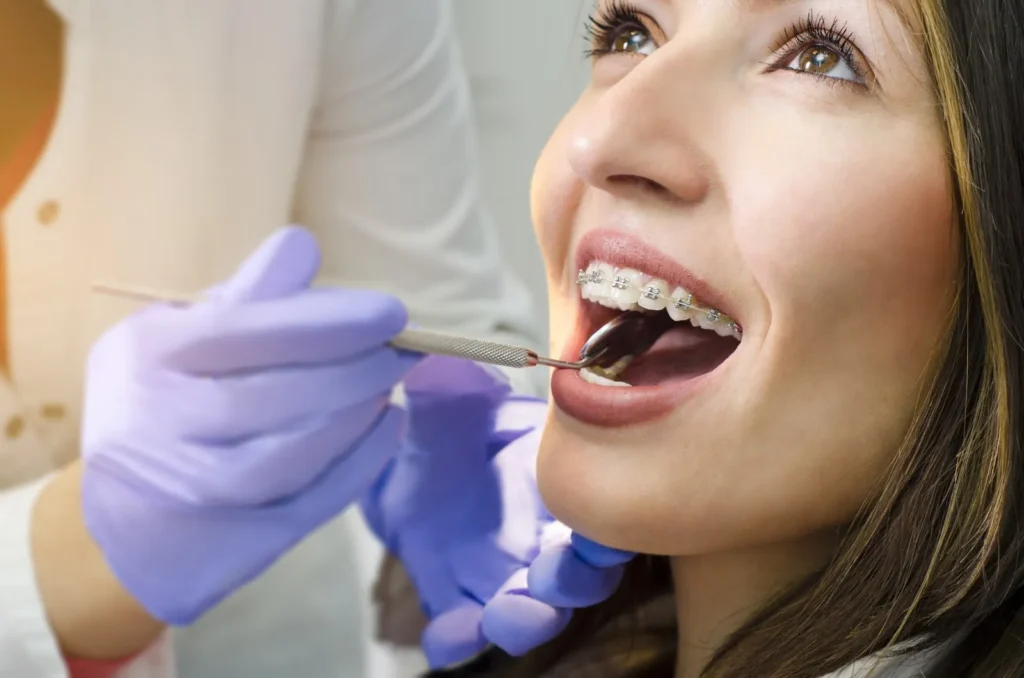
¿De qué está hecho el alambre metálico de los aparatos de ortodoncia?
Depende del proveedor y del tratamiento concreto, pero por lo general el alambre metálico está hecho de un material distinto al de los brackets metálicos.
Suele estar fabricado con una aleación de acero inoxidable que proporciona la máxima flexibilidad al estirarse a través de los brackets sobre los dientes, y la fuerza suficiente para mover suavemente los dientes hasta su alineación correcta. Esta parte del aparato, conocida como arco de alambre, es muy importante, ya que constituye el núcleo del movimiento adecuado de los dientes. El acero inoxidable proporciona la combinación ideal de flexibilidad y fuerza para este fin, aunque algunos arcos de alambre pueden estar hechos de metales diferentes, como cobre, cromo y níquel.

¿Pueden oxidarse los aparatos metálicos?
El óxido es la corrosión del hierro: como el hierro empieza a corroerse con bastante rapidez, no se utiliza en los aparatos ortopédicos metálicos o se utiliza en cantidades muy pequeñas.
El metal utilizado en los aparatos ortopédicos metálicos se selecciona por su durabilidad y nivel de resistencia a la corrosión: suele ser una aleación de titanio, níquel y/o cromo o, en algunos casos, cobalto. Estas aleaciones están diseñadas para ser resistentes a la corrosión.
Ningún metal es 100% resistente a la corrosión: todos se degradan con el tiempo. Sin embargo, estas aleaciones están diseñadas para resistir la corrosión con tanta eficacia que se mantendrán en excelentes condiciones mientras dure su tratamiento de ortodoncia.
No deberías notar ninguna corrosión del metal durante el tiempo que dure tu tratamiento de ortodoncia. Si tienes alguna duda, consulta a tu ortodoncista.
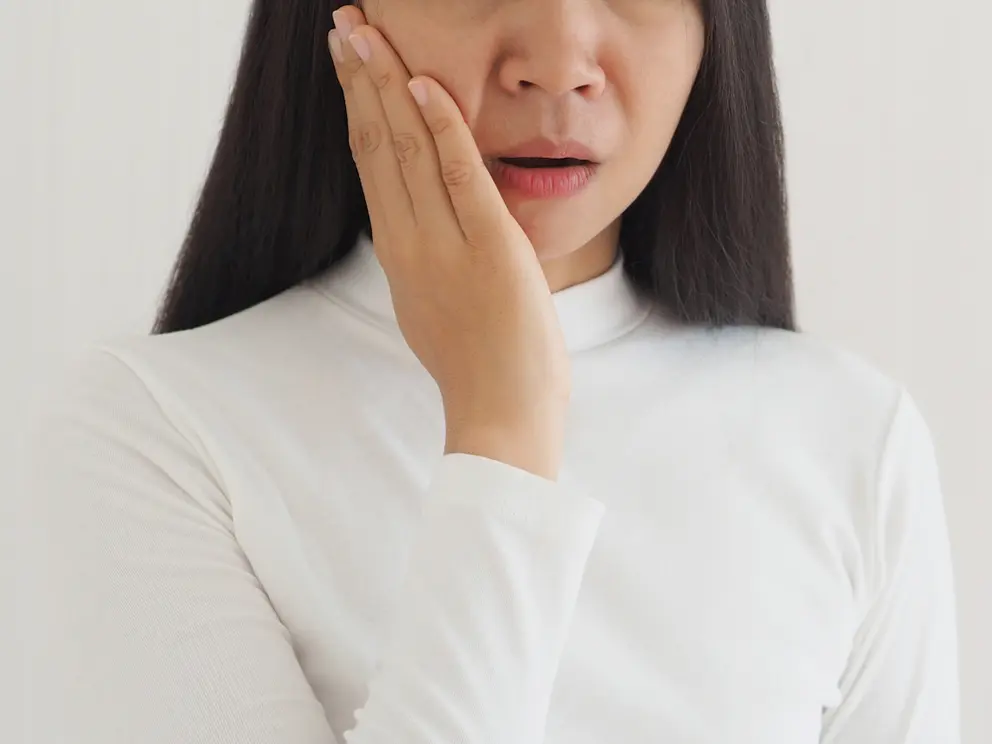
¿Son seguros los aparatos metálicos?
Sí, los brackets metálicos son totalmente seguros. Las aleaciones metálicas utilizadas en el tratamiento con brackets están aprobadas por la FDA y diseñadas para ser biocompatibles, a fin de garantizar su eficacia sin alterar los procesos normales del organismo.
El metal no contiene sustancias químicas nocivas, es fácil de limpiar y resistente a las manchas y a la corrosión. Los brackets metálicos son un tratamiento seguro y eficaz para niños, adolescentes y adultos de todas las edades.
El único problema de los brackets metálicos es para las personas alérgicas al níquel: en esos casos, el ortodoncista utilizará un metal sin níquel para los brackets a fin de evitar una reacción alérgica.
Si tienes más preguntas sobre la seguridad de los aparatos metálicos, consulta a tu ortodoncista.

¿Se puede ser alérgico a los aparatos metálicos?
En casos muy raros, los pacientes pueden ser alérgicos al metal de los aparatos. Esto es poco frecuente, pero cuando ocurre, suele deberse a una alergia al níquel, que contienen en pequeñas cantidades las aleaciones metálicas utilizadas para los brackets o los alambres.
La reacción alérgica suele ser dermatológica, con erupciones o picor en los labios o las mejillas. Si tienes alergia al níquel, puedes llevar aparatos metálicos: el ortodoncista utilizará una aleación metálica sin níquel para el tratamiento.
También puedes plantearte otros tratamientos de ortodoncia, como los brackets cerámicos, que no suelen contener níquel, o los alineadores Invisalign, que están hechos de plástico transparente y no contienen metal.
Si no estás seguro de tener alergia al níquel, puedes consultar a un dermatólogo o a un especialista en alergias, que te hará una prueba para determinar si tienes alergia al níquel.

¿Puedo hacerme una resonancia magnética con ortodoncia?
Sí, es totalmente seguro hacerse una resonancia magnética con aparatos de ortodoncia. Sin embargo, el metal de los aparatos puede distorsionar las imágenes si la parte del cuerpo que se va a explorar está en la boca, el cuello o la cabeza. Tu médico determinará si los aparatos metálicos distorsionan o no la resonancia magnética.
Más información sobre la resonancia magnética con ortodoncia

¿Son eficaces los aparatos metálicos?
Los aparatos metálicos son la forma original de tratamiento de ortodoncia, y siguen siendo extremadamente eficaces, seguros, fiables y cómodos. Millones de personas – niños, adolescentes y adultos – consiguen dientes rectos y hermosas sonrisas utilizando aparatos metálicos cada año, con resultados duraderos.
La tecnología utilizada en los brackets metálicos ha seguido evolucionando, utilizando aleaciones metálicas de última generación y modelado 3D de precisión para lograr resultados sobresalientes, cada vez.
También son uno de los tipos de tratamiento de ortodoncia más rentables y pueden enderezar incluso los casos de ortodoncia más complejos.
Si estás interesado en conseguir unos dientes rectos y una sonrisa bonita, ¡los brackets metálicos pueden ser la herramienta que necesitas para lograr los resultados que deseas!
Más información sobre el tratamiento con brackets metálicos
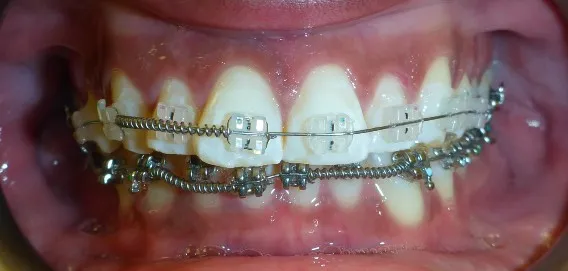
Brackets cerámicos: Resultados visibles de un tratamiento imposible
Si buscas un tratamiento de ortodoncia con un aspecto más sutil que los brackets metálicos, los brackets cerámicos pueden ser justo lo que estás buscando.
Los brackets cerámicos son un método de tratamiento innovador que utiliza el mismo diseño básico que los brackets metálicos, pero con materiales diseñados para fundirse a la perfección con tu boca. En lugar de brackets metálicos, los brackets cerámicos están hechos de una resina transparente o del color del diente que combina con tus dientes.
Los brackets cerámicos proporcionan resultados óptimos, dientes rectos y una bonita sonrisa, con un aspecto sutil que encanta a muchos pacientes.
Obtenga más información sobre la tecnología utilizada en los apoyos de cerámica a continuación.
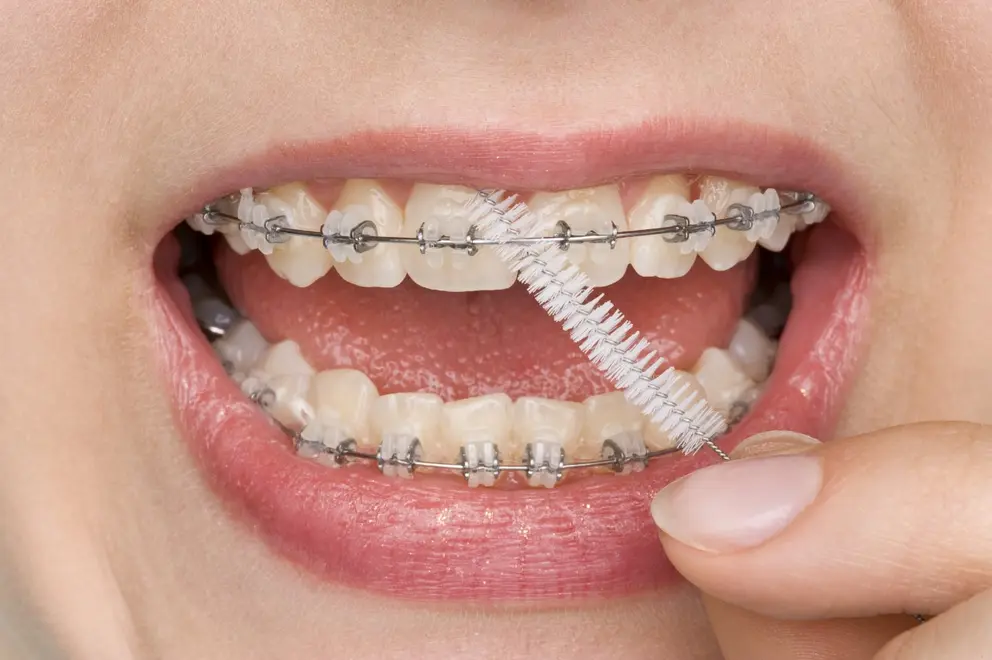
¿De qué están hechos los brackets cerámicos?
Los brackets cerámicos están diseñados de forma similar a los brackets metálicos: se fija un bracket a cada diente y se conectan mediante un alambre, para mover los dientes de forma lenta y segura hasta su alineación correcta.
Los brackets cerámicos son una variación innovadora del tratamiento con brackets metálicos, para que la ortodoncia sea menos perceptible y más sutil. En lugar de brackets metálicos, utilizan una resina de polímero del color del diente o transparente para fabricar los brackets, que cuando se colocan en los dientes son muy sutiles y difíciles de ver.
El arco de alambre es de metal fino de color claro, diseñado para fundirse con su sonrisa. El resultado es un tratamiento eficaz, seguro y cómodo, con un impacto mínimo en su aspecto.
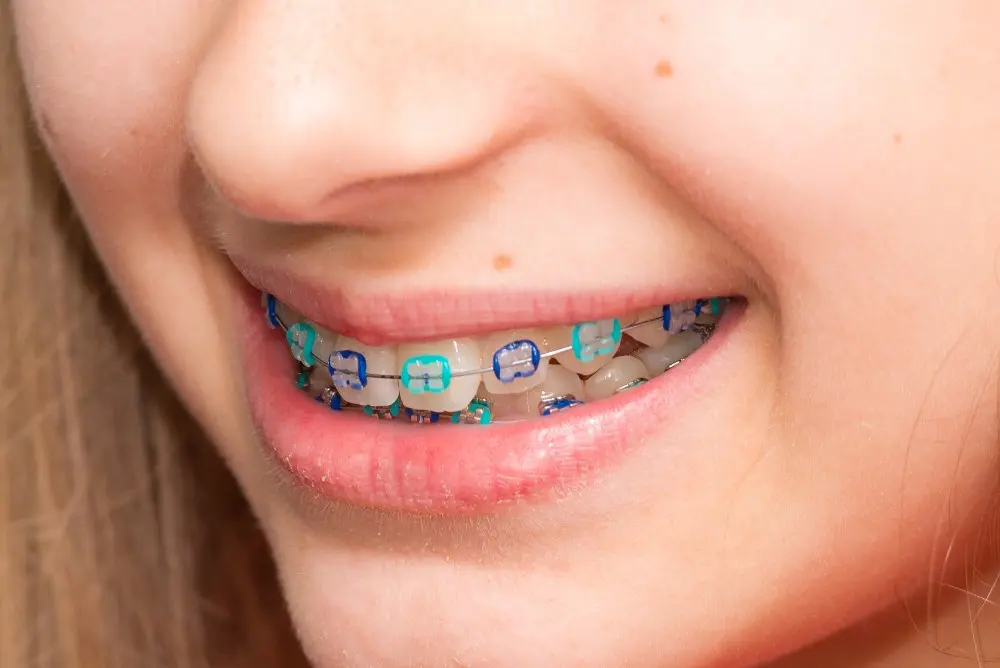
¿Son seguros los brackets cerámicos?
Sí, los brackets cerámicos son totalmente seguros para niños, adolescentes y adultos de todas las edades. Todos los materiales están diseñados para la biocompatibilidad, para asegurarse de que no irritan la boca durante el tratamiento. Las resinas y los metales usados en apoyos son todos los materiales del médico-grado que son aprobados para el uso médico por el FDA.
El plástico utilizado en las resinas no contiene BPA y es totalmente atóxico. No se degradará en su boca y durará durante todo el tratamiento para obtener resultados excelentes, fiables y eficaces.

¿Son los brackets cerámicos tan eficaces como los metálicos?
Los brackets cerámicos utilizan la misma tecnología básica que los metálicos y consiguen los mismos resultados. Son una alternativa excelente y fiable a los aparatos metálicos.
Para algunos pacientes, los brackets metálicos pueden seguir siendo mejor opción que los cerámicos, ya que estos últimos son ligeramente menos duraderos que los metálicos y más propensos a romperse. Los deportistas o cualquier persona con un estilo de vida extremadamente activo pueden preferir los brackets metálicos. Según algunos estudios, los brackets cerámicos tienen el doble de probabilidades de romperse que los metálicos.
También son más propensos a mancharse, ya que son transparentes o de color claro, lo que requiere un cuidado más cuidadoso y una dieta potencialmente más restringida. Las ligaduras -o gomas elásticas que se colocan sobre los brackets para mantener el alambre sujeto- también son transparentes, por lo que pueden mancharse más fácilmente, aunque se cambian cada mes, por lo que este problema es menor.
Debido a que es más probable que se rompan, la duración del tratamiento con brackets cerámicos puede ser algo mayor que con los metálicos. Pregunta a tu ortodoncista cuál es el mejor tratamiento para ti.
Si buscas un régimen de tratamiento excelente y eficaz con un impacto mínimo en tu aspecto, los brackets cerámicos son una gran elección.
Más información sobre los brackets cerámicos.
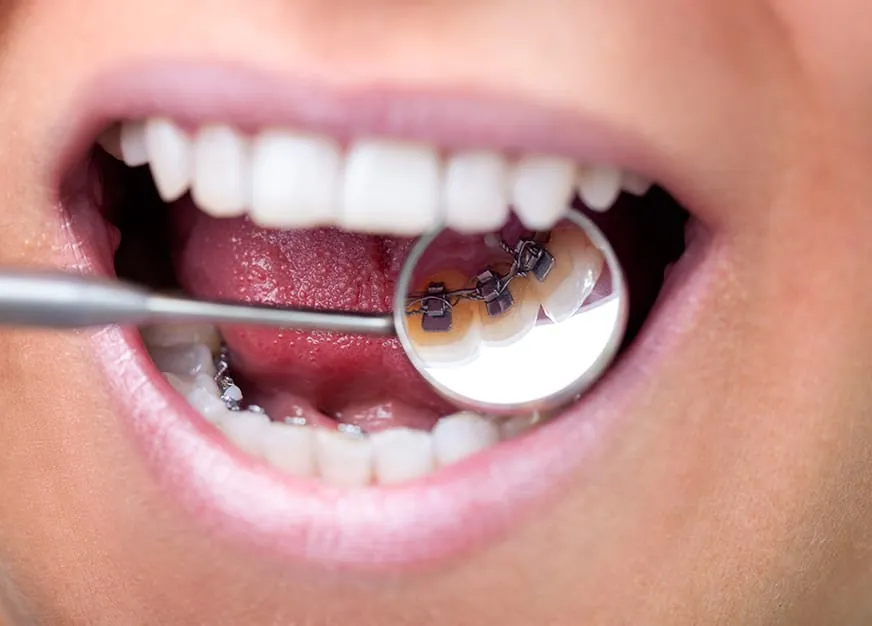
Brackets Linguales: El tratamiento que funciona entre bastidores

¿De qué están hechos los frenos linguales?
Por lo general, los aparatos linguales están hechos de una aleación que contiene oro, que es bueno para enderezar los dientes con el contacto constante con la lengua y la saliva.
Son totalmente seguros para su uso en niños, adolescentes y adultos de todas las edades, y están fabricados con materiales médicos aprobados por la FDA para su uso en aparatos de ortodoncia.

¿Son seguros los frenos linguales?
Sí, los brackets linguales son totalmente seguros. Los brackets se funden en oro para satisfacer las necesidades de su tratamiento personalizado y su uso está aprobado por la FDA, así como por la Asociación Americana de Ortodoncistas y la Asociación Dental Americana.

¿Son eficaces los brackets linguales?
Sí, los brackets linguales son un tratamiento de ortodoncia eficaz. Son muy populares entre los pacientes que desean enderezar sus dientes sin que parezcan aparatos.
Suelen ser considerablemente más caros que los aparatos metálicos tradicionales, debido a la personalización necesaria para crear el tratamiento y al hecho de que son menos los ortodoncistas que ofrecen esta opción.
Su diseño específico los hace eficaces para determinados tipos de casos de tratamiento, pero algunos pacientes pueden experimentar mejores resultados con los brackets metálicos, especialmente en los casos más complejos. Si te preguntas si los brackets Incognito son adecuados para ti, consulta con tu ortodoncista.
Más información sobre los brackets linguales.
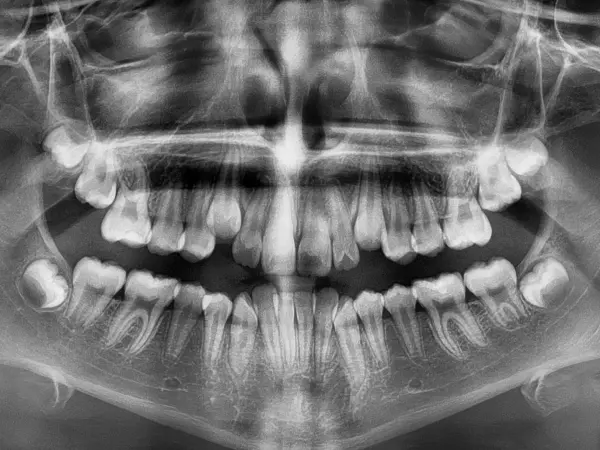
Uso de radiografías en ortodoncia: imágenes para mostrar la imagen dental completa
Las radiografías cefalométricas, también conocidas como radiografías, son una parte importante de su tratamiento de ortodoncia. A diferencia de las fotografías normales de su sonrisa, las radiografías obtienen una imagen completa de toda su estructura dental: lo que está por encima y por debajo.
Utilizando una cantidad de radiación muy pequeña y totalmente segura, las radiografías muestran al médico los dientes, los huesos y la estructura dental, incluso las partes que están ocultas detrás de los tejidos. Esto permite al médico ver el cuadro completo y detectar cualquier caries subyacente, problemas de estructura ósea o desarrollo radicular complejo que deba corregirse.
La mayoría de los pacientes con ortodoncia se someterán a radiografías: son totalmente seguras, y tu ortodoncista colegiado tomará todas las precauciones necesarias para mantenerte a salvo. El metal de los brackets no supondrá ningún riesgo para ti cuando te realicen radiografías.
Más información sobre radiografías dentales
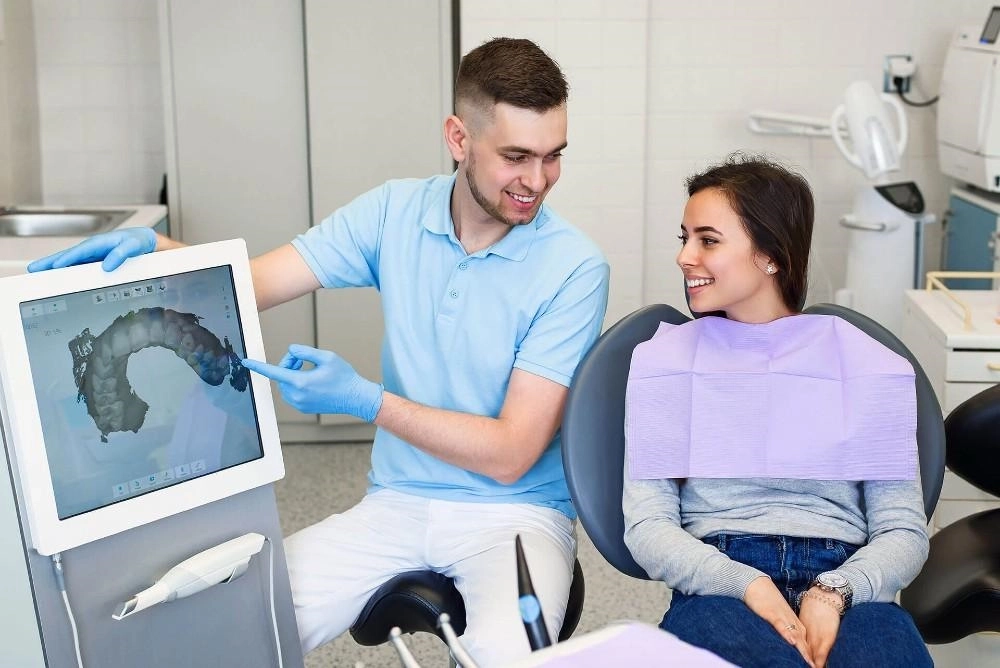
Imágenes 3D en ortodoncia: Herramientas de vanguardia para una atención integral
En el pasado, el tratamiento de ortodoncia se limitaba a imágenes bidimensionales para crear imágenes de los dientes de los pacientes. Se utilizaban tanto radiografías cefalométricas (rayos X) como fotografías (así como moldes de masilla) para desarrollar una imagen de los dientes, los huesos y las estructuras dentales subyacentes.
En los últimos años, la tecnología digital ha contribuido a revolucionar las capacidades de imagen de los ortodoncistas. Las imágenes en 3D permiten ahora a los médicos desarrollar una imagen completa de toda la estructura dental, e incluso crear modelos predictivos para determinar los métodos de tratamiento más eficaces.
Más información sobre la imagen 3D en ortodoncia.

Elija un ortodoncista experto con las herramientas más avanzadas
Existen muchas opciones para el tratamiento con brackets. Sea cual sea la que elija, es importante recordar que cada aparato de ortodoncia es una herramienta en manos de su médico. La parte más importante para conseguir unos dientes rectos es siempre su proveedor de ortodoncia con experiencia y licencia.
Asegúrese de encontrar un proveedor especializado en ortodoncia, no un dentista general que sólo trate unos pocos casos al año. Ahorrará dinero y recibirá la atención de los profesionales más experimentados en una clínica de ortodoncia especializada.
Busque en su barrio el proveedor de ortodoncia con las mejores críticas y la mayor experiencia. Al fin y al cabo, tu sonrisa es para siempre y merece los mejores cuidados.
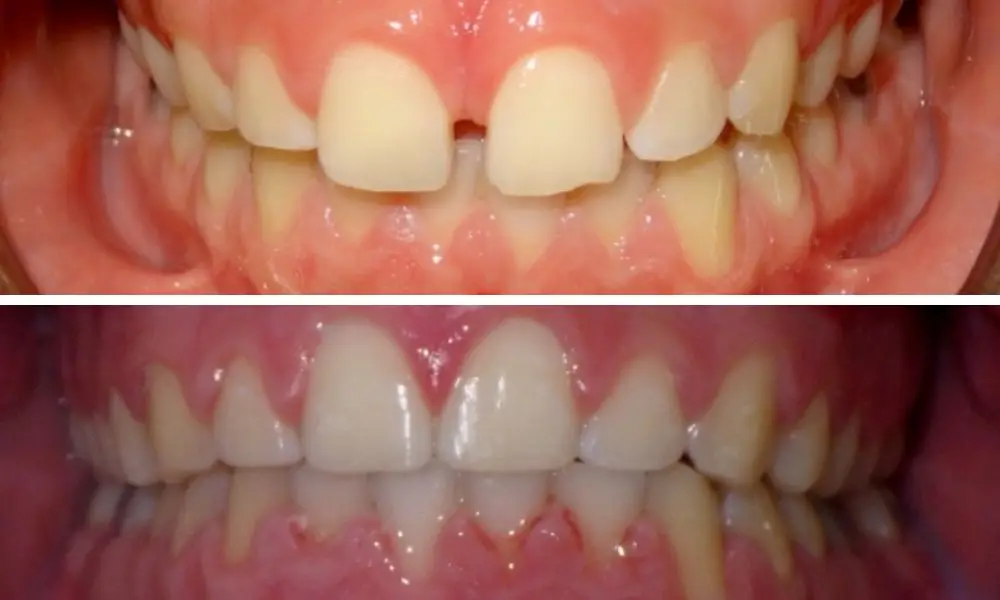
Tratamientos de ortodoncia, antes y después
Los brackets son conocidos por transformar sonrisas utilizando los mismos métodos probados y verdaderos que han funcionado durante generaciones. Hemos recopilado varios pacientes reales de Diamond Braces que han corregido sus sonrisas utilizando brackets.
Vea como pacientes reales transformaron sus sonrisas y sus vidas con brackets

